The Lonesome Car-boy ( ロンサムカーボーイ ) line of component car audio was released in 1977 in Japan and would also make its release worldwide as Pioneer Component. This was the first component system released with other companies soon following. Sony had the “My Deen” component system, Kenwood had the “Trio” car component. There was also the Sansui “Bardo” along with Clarion and Biyo component setups. Not everything that was released for the Lonesome Car-boy line in Japan was available to the worldwide market, but much of the basics were. It also went through a couple revisions in its 9 year cycle, with Lonesome Car-boy II and Lonesome Car-boy Centrate (which I might cover later). There was also many more items like door speakers and regular stereos that Pioneer created at the time. This post will just cover just the most important items of the first series of Lonesome Car-boy, especially those that are commonly seen in kaido racers.
Much of the advertisements around the Lonesome Car-boy era focused around Americana life in Arizona. American actor Warren Oates was the original face for the Lonesome Car-boy line. After he passed in 1982, Ry Cooder was featured in advertisements.
The commercial features Warren shooting a Budweiser can with Yoshio Kataoka narrating over it. The translated narration is: “Born in Helena, Montana. When I was 4, I was in Cheyenne. When I was 12, I was in Abilene. When I was 16, I was in Denver. When I was 18, I was in Nebraska. When I was 21, I was in Santa Fe. When I was 23, I was in Tucson. When I was 28, I was in San Antonio. Wilderness is home wherever you go.”
In 1986, the Lonesome Car-boy line was retired and in its place came the Carrozzeria line of car audio.

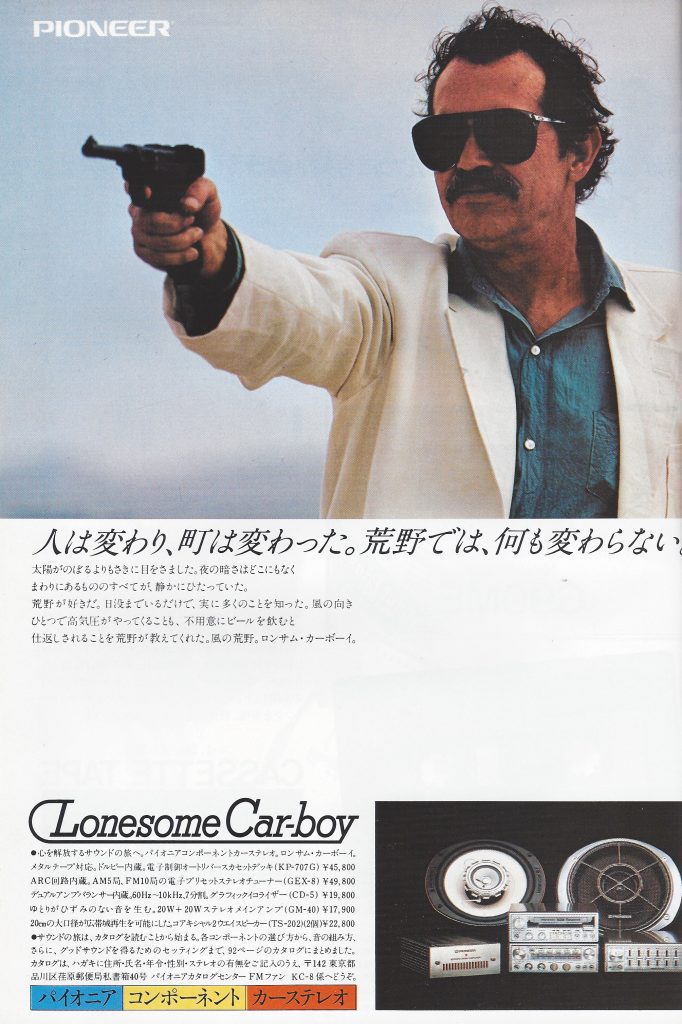
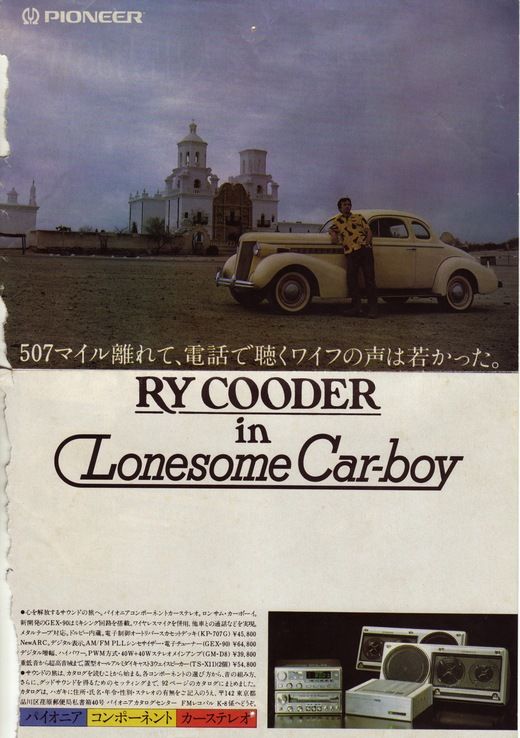


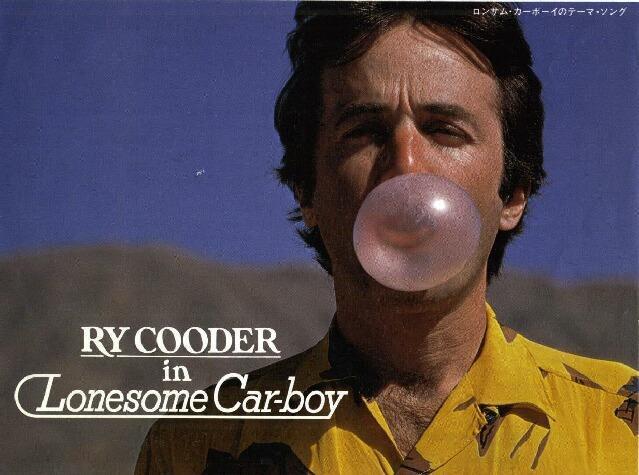


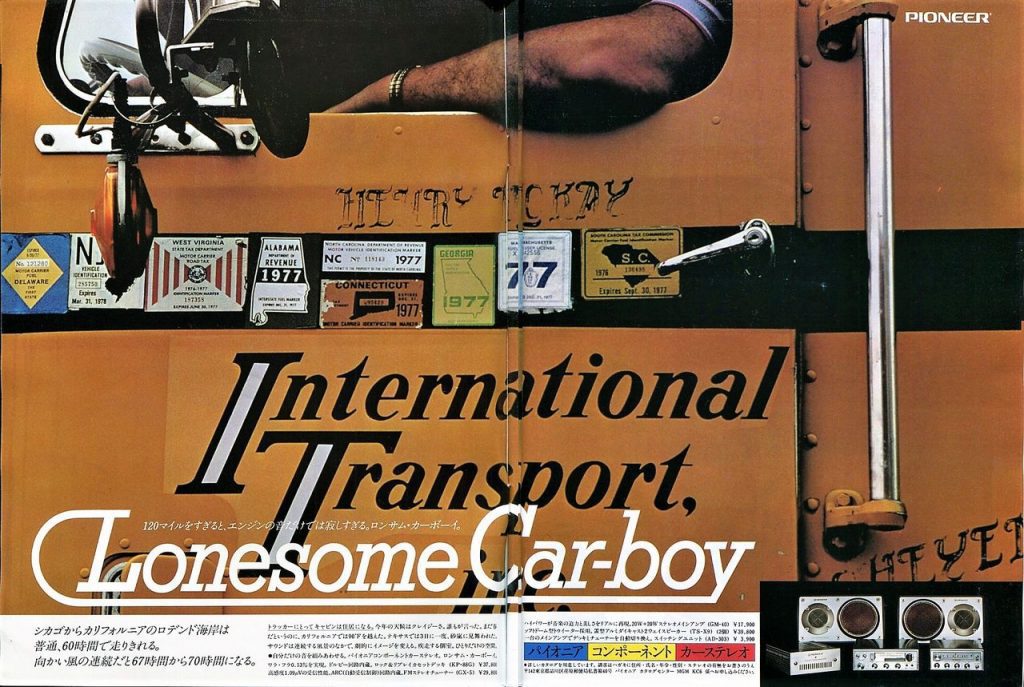

Pioneer Component Audio | Sizes | Tape Decks | Radios |Amplifiers | Rear Mount Speakers | Equalizers | Level Indicators | Mounting Kits | Faders
Pioneer Component Audio

The main principle behind having separate components is the ability to pick and choose to fit your needs. If you need more power, you can pick a higher rated amp. If you want to have front and rear speakers, you can get an equalizer or fader and add more amplifiers. The most important part of this is the separate amplifiers. The components have extra space to pack in more features and you are able to relocate the heat away from them as well. You can also start with a basic setup of a tape deck and amp and add more in the future.
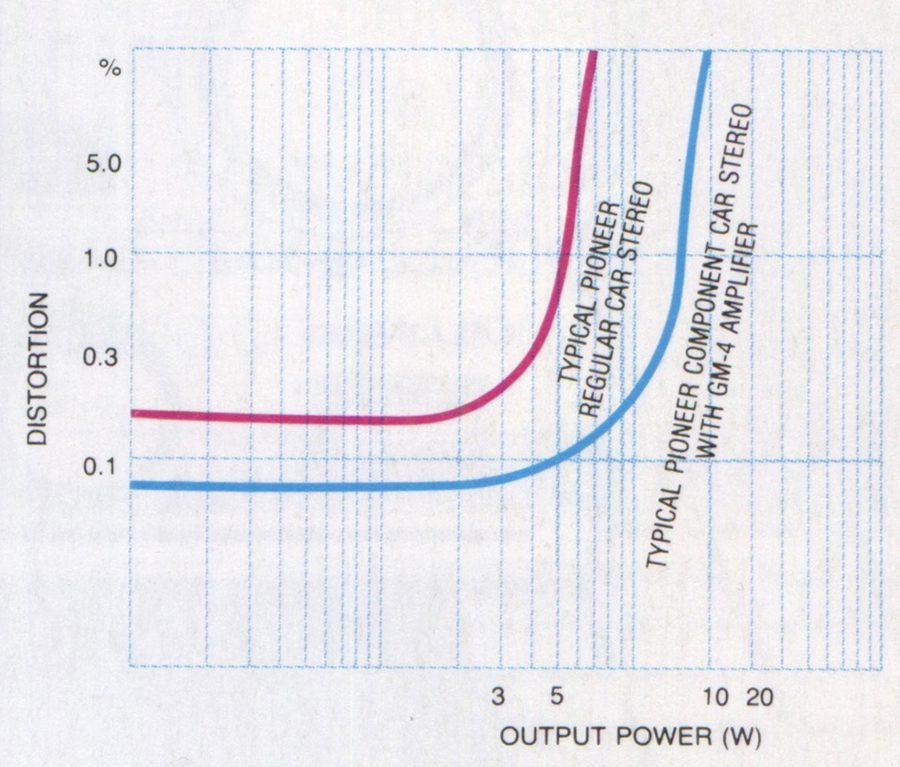
If you want to enjoy great stereo sound in your car, it helps to understand the various problems you’re going to encounter. Road, wind and engine noise is obvious offenders; and the faster you go, the noisier it gets. Unfortunately, ordinary car stereos with the amplifier built in don’t always give you sufficient power to over come these problems.You can turn up the volume, of course, but without extra power, distortion will quickly rise above acceptable levels. Nor do ordinary car stereos give you the space you need for all those performance features that distinguish good stereo from great stereo. And that’s the whole concept behind Pioneer Component Car Stereo. As with home Hi-Fi component systems, the philosophy is simple enough: separate units, each one designed and built to perform only its own specific function, in the most effective way possible.
Pioneer, 1983
Sizes
Before getting into the different components, this was at a time where there wasn’t a standard “DIN” size for the stereos. This means any of the size A, B, or C stuff will be too small for your DIN sized hole. You might need to make an adapter to fill the space or use one of the mounting kits. Most of the desirable parts are going to be size B and C.
Size A: 122 mm wide x 50 mm tall x 155 mm deep
Size B: 150 mm wide x 50 mm tall x around 167 mm deep
Size C: 150 mm wide x 50 mm tall x 134 mm deep
Size D: 180 mm wide x 50 mm tall x 166 mm deep
DIN: 180 mm wide x 50 mm tall
Tape Decks
KP-919G

The KP-919G is the top of the line when it came to Lonesome Car-boy tape decks. The biggest feature was its computer controlled 3-motor Reel Direct Drive system. With this system it has superior accuracy and is able to achieve a very low Wow/Flutter of 0.07% WRMS. One other huge feature was the “Multi-Music Search System” which allowed scanning the tape to the next track. This would be similar to pressing the next button on conventional music player. There was also an option remote control (CD-R909), which was a wired unit that brought the music search to a controller. This unit also featured separate treble and bass knobs and an auto eject on key-off.
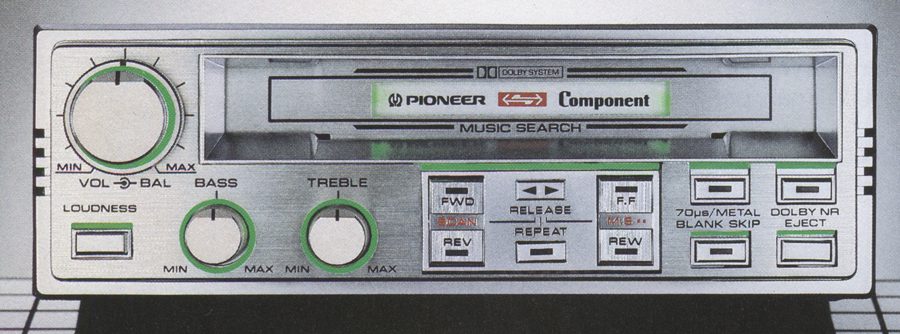

Key Features
- 3-motor Reel Direct Drive
- Full feathertouch logic control
- Multi-music Search
- Auto Reverse
- Dolby Noise Reduction
- Ribbon Sendust Playback Head
- Metal Tape
- Loudness
- Separate bass/treble
- Key-off eject
- Auto guard eject
- Remote control (optional)
- Night Illumination
Size: B
Wow/Flutter (WRMS): 0.07%
Frequency Response (+-3dB): 30Hz-16,000Hz (Normal), 30Hz-20,000Hz (Metal)
Signal to Noise Ratio: Dolby NR In: 63dB, Dolby NR Out: 55dB
Bass/treble independent tone control: Bass +/-10dB (100Hz), Treble +/- 10dB (10kHz)
Release Date: July 1982
Retail price: ¥69,800
KP-818G
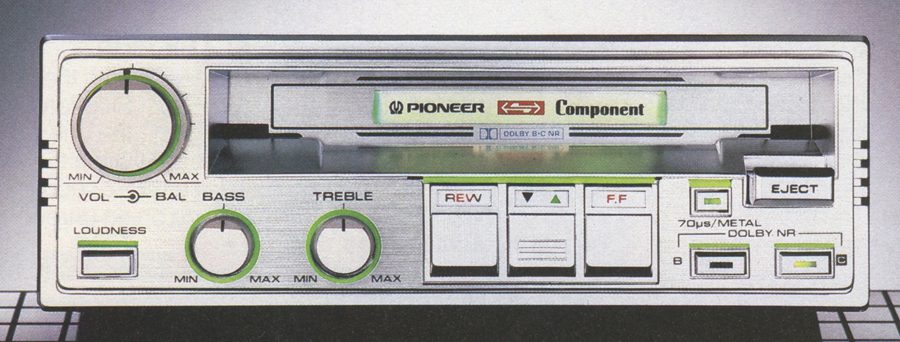
The KP-818G has exciting illumination on the buttons similar to the 919G. Unfortunatly it lacks the 3-motor Reel Direct Drive system, but it has Dolby’s newest (at the time) C level noise reduction. The forward and reverse buttons are “feather touch”, meaning you don’t have to jam your fingers in there to move on to the next track. Also compatible with the remote control.
Key Features
- Dolby B-C Noise Reduction
- High performance Ribbon Sendust playback head
- New-style night illumination
- Auto reverse
- Feathertouch logic control
- Optional remote control
- Metal Tape
- Loudness
- Separate bass/treble
- A.T.S.C.
Size: B
Wow/Flutter (WRMS): 0.09%
Frequency Response (+-3dB): 30Hz-15,000Hz (Normal), 30Hz-20,000Hz (Metal)
Signal to Noise Ratio: Dolby C NR In: 70dB, Dolby B NR In: 63dB, Dolby B NR Out: 55dB
Bass/treble independent tone control: Bass +/-10dB (100Hz), Treble +/- 10dB (10kHz)
Release Date: May 1982
Retail price: ¥52,800
KP-717G

The KP-717G is a like a little brother of the KP-818G, lacking the Dolby C noise reduction and the Ribbon Sendust playback head. In its place is a Hard Permalloy playback head which is still a good replacement.
Key Features
- Dolby Noise Reduction
- Metal Tape
- Auto reverse
- Feathertouch logic control
- Night illumination
- Separate bass/treble
- Loudness
- A.T.S.C.
- Key-off release/key-on play
Size: B
Wow/Flutter (WRMS): 0.09%
Frequency Response (+-3dB): 30Hz-15,000Hz (Normal), 30Hz-18,000Hz (Metal)
Signal to Noise Ratio: Dolby B NR In: 63dB, Dolby B NR Out: 55dB
Bass/treble independent tone control: Bass +/-10dB (100Hz), Treble +/- 10dB (10kHz)
Release Date: May 1982
Retail price: ¥42,800
KP-707G

The KP-707G is a slightly older version of the KP-717G. The button design is different and is illimination has changed.
Size: B
Wow/Flutter (WRMS): 0.13%
Frequency Response (+-3dB): 30Hz-15,000Hz (Normal), 30Hz-18,000Hz (Metal)
Signal to Noise Ratio: Dolby B NR: 60dB
Bass/treble independent tone control: Bass +/-10dB (100Hz), Treble +/- 10dB (10kHz)
Release Date: May 1979
Retail price: ¥45,800
KP-414G
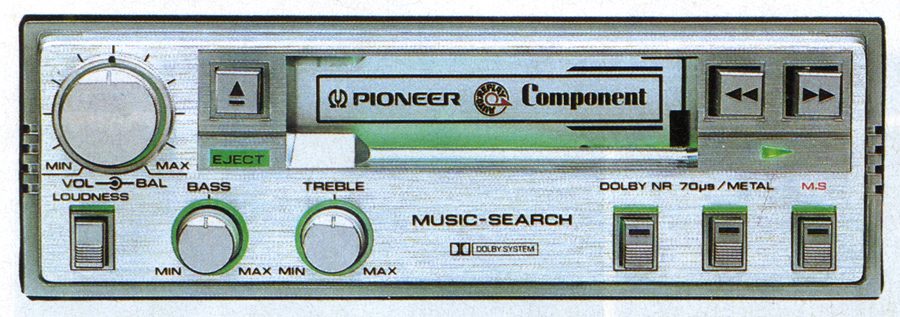
This model comes with the auto-replay functionality that automatically starts playing the tape after rewinding. High density ferrite head with a flat frequency and excellent abrasion resistance. This also comes with a key-off release that automatically removes the pinch rollers when the car is turned off to save the tape from wear.
Key Features
- Dolby Noise Reduction
- Auto reverse
- Music Search
- Metal Tape
- Night illumination
- Separate bass/treble
- Loudness
- A.T.S.C.
- Key-off release/key-on play
Size: C
Wow/Flutter (WRMS): 0.09%
Frequency Response (+-3dB): 30Hz-16,000Hz (Normal), 30Hz-20,000Hz (Metal)
Signal to Noise Ratio: Dolby NR In: 63dB, Dolby NR Out: 55dB
Bass/treble independent tone control: Bass +/-10dB (100Hz), Treble +/- 10dB (10kHz)
Release Date: 1983
Retail price: ¥32,800
KP-313G
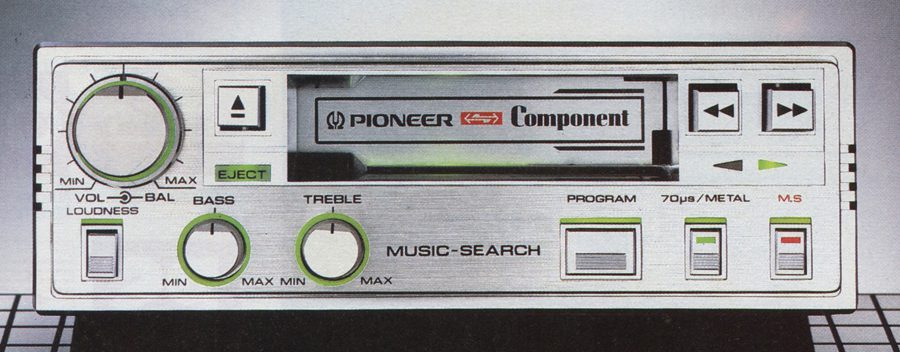
A more budget option than the other high end models, but still has the auto reverse and music search, like repeating a song or move to the next blank spot on the tape. The loudness button offers a boost of the audio on a quiet tape.
Key Features
- Auto reverse
- Music Search
- Metal Tape
- Night illumination
- Separate bass/treble
- Loudness
- A.T.S.C.
- Key-off release/key-on play
Size: C
Wow/Flutter (WRMS): 0.09%
Frequency Response (+-3dB): 30Hz-15,000Hz (Normal), 30Hz-18,000Hz (Metal)
Signal to Noise Ratio: 55dB
Bass/treble independent tone control: Bass +/-10dB (100Hz), Treble +/- 10dB (10kHz)
Release Date: December 1982
Retail price: ¥38,800
KP-212G

The budget tape player for the 1983 year. Auto replay and auto eject allow the tape to start once you have rewound it to the beginning and ejecting the tape at the end. Still gets the loudness button and illumination.
Key Features
- Night illumination
- Auto replay/eject
- Music Search
- Metal Tape
- A.T.S.C.
Size: C
Wow/Flutter (WRMS): 0.09%
Frequency Response (+-3dB): 30Hz-15,000Hz (Normal), 30Hz-18,000Hz (Metal)
Signal to Noise Ratio: 55dB
Bass/treble independent tone control: Bass +/-10dB (100Hz), Treble +/- 10dB (10kHz)
Release Date: December 1982
Retail price: ¥29,800
KP-88G

This is one of the first tape decks in the Lonesome Car-boy series that had Dolby noise reduction circut built in. This is emphasized by the large logo on the front of the unit. The forward and reverse knob is also fun, requiring you to ‘twist’ it to advance the tape.
Size: B
Wow/Flutter (WRMS): 0.13%
Signal to Noise Ratio: 60dB
Release Date: August 1977
Retail price: ¥37,800
KP-77G

The KP-77G features another interesting way to advance or rewind the cassette. Drag the knob to the left or right to wind up the tape. Also features a “flip” button, so you don’t need to eject to switch sides.
Size: B
Wow/Flutter (WRMS): 0.13%
Signal to Noise Ratio: 52dB
Release Date: May 1979
Retail price: ¥34,800
KP-66G

Very similar to the KP-88G, but lacking the Dolby noise reduction and available in a smaller size.
Size: A
Wow/Flutter (WRMS): 0.13%
Signal to Noise Ratio: 52dB
Release Date: August 1977
Retail price: ¥29,800
Radios
GEX-91
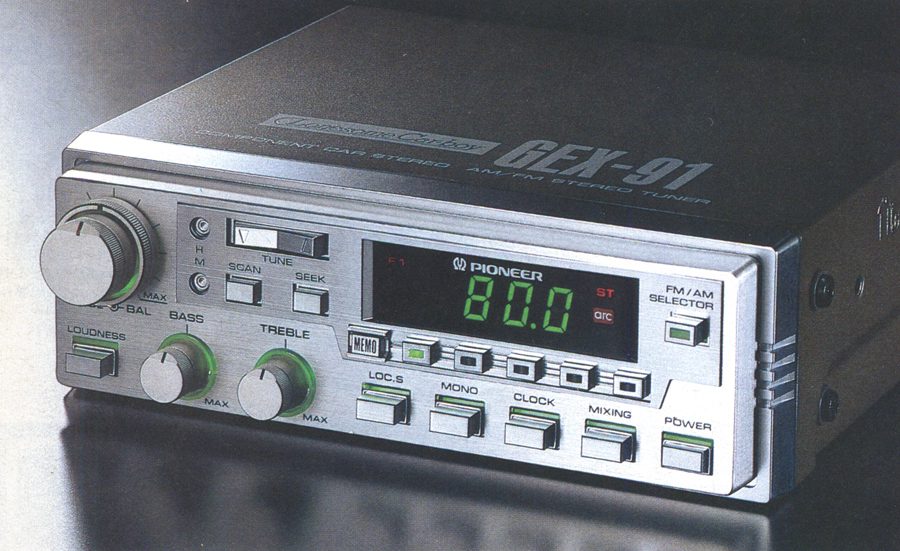
This is the top of the line Lonesome Car-boy radio with digital locking for tuning using the PLL synthesizer circuit. Built in digital quartz clock with 12-hour display. Automatic seek mechanism for finding radio stations and regular scanning for finding the specific bandwidth as well. FM/AM with a total of 15 stations preset memory. Built in wireless mixing circuit and also compatible with the remote control.
Size: C
Reception Band: FM 76.1-89.9MHz, AM 531-1,620kHz
Maximum Output Level: 200mV
Useable Sensitivity: FM 12dBf (1.1μV/75Ω, mono) AM 18μV (25dB) (S/N:20dB)
Signal to Noise Ratio: 50dB
Frequency Response (+/-3dB): 30Hz-15,000Hz
Effective Selectivity: FM 70dB (+/-400kHz)
Bass/treble independent tone control: Bass +/-10dB (100Hz), Treble +/- 10dB (10kHz)
Release Date: June 1982
Retail price: ¥64,800
GEX-60, GEX-61 & GEX-68
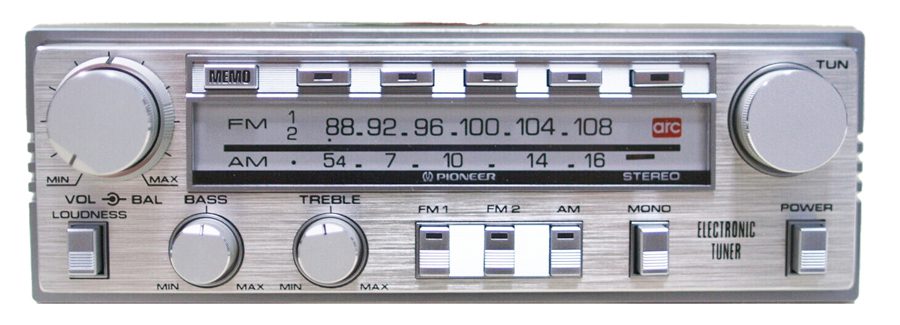
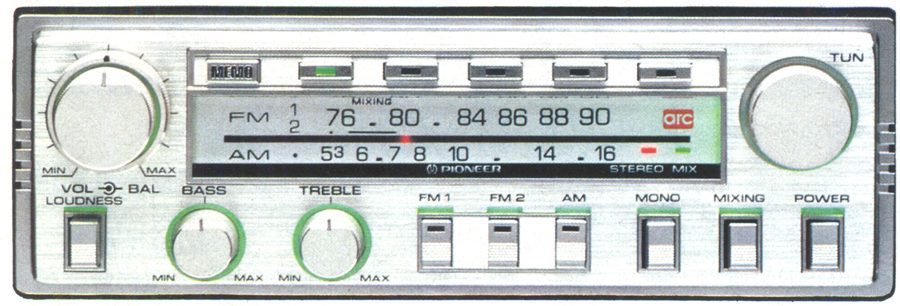

This would be the more common AM/FM radio available for this series. There was slight differences between the models depending on the region it was released. In Japan, they use a different frequency range for FM radio than they do in the US. The key upgrade that was introduced with the GEX-61 is the FM wireless mixing circuit. This allowed their new karaoke feature to be used on it. The feather touch buttons are also a nice feature.
Key Features
- Night illumination
- 15-station preset (10 FM, 5 AM)
- ARCllI
- PNS
- Electronic tuning
- Separate bass/treble
- LED display indicators
- Loudness
- FM auto/mono switch
- Auto deck/tuner switching unit
- Power antenna activator
Size: C
Reception Band: FM 76-90MHz, AM 520-1,620kHz (Japan), FM 88–104, MW & LW (GEX-68), FM88-108
Maximum Output Level: 200mV
Useable Sensitivity: FM 12dBf (1.1μV/75Ω, mono)
Signal to Noise Ratio: 50dB
Frequency Response (+/-3dB): 30Hz-15,000Hz
Effective Selectivity: FM 70dB (+/-400kHz)
Bass/treble independent tone control: Bass +/-10dB (100Hz), Treble +/- 10dB (10kHz)
Release Date: June 1982
Retail price: ¥44,800
GEX-8
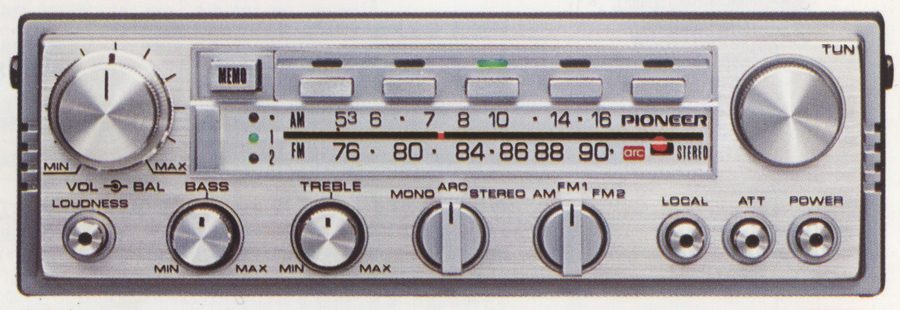
The GEX-8 is a slightly older version of the other GEX-60, with knobs to select AM and FM, along with mono or stereo. It did come with Pioneer’s ARC (automatic reception control) which helped hunting for stations easier with the scroll knob.
Size: B
Reception Band: FM 76-90MHz, AM 530-1,605kHz
Maximum Output Level: 200mV
Useable Sensitivity: FM 1.09μV, AM 40μV
Frequency Response (+/-3dB): 30Hz-15,000Hz
Bass/treble independent tone control: Bass +/-10dB (100Hz), Treble +/- 10dB (10kHz)
Release Date: 1979
Retail price: ¥49,800
GX-5A
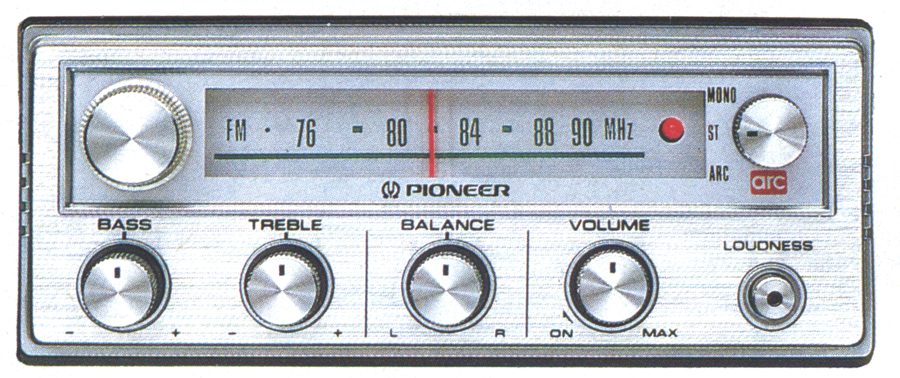
A very barebones radio for a size A users. Has all the basic functions that were available at the time, along with Pioneers automatic reception control and a switch to mono or stereo
Size: A
Reception Band: FM 76-90MHz, AM 530-1,605kHz
Maximum Output Level: 200mV
Useable Sensitivity: FM 1.09μV, AM 40μV
Frequency Response (+/-3dB): 30Hz-15,000Hz
Bass/treble independent tone control: Bass +/-10dB (100Hz), Treble +/- 10dB (10kHz)
Release Date: 1979
Retail price: ¥29,800
GEX-5

This model is essentially the same as the GEX-5A, but without the mono ability.
Size: A
Reception Band: FM 76-90MHz, AM 530-1,605kHz
Maximum Output Level: 200mV
Useable Sensitivity: FM 1.09μV, AM 40μV
Frequency Response (+/-3dB): 30Hz-15,000Hz
Bass/treble independent tone control: Bass +/-10dB (100Hz), Treble +/- 10dB (10kHz)
Release Date: 1977
Retail price: ¥29,800
GX-7
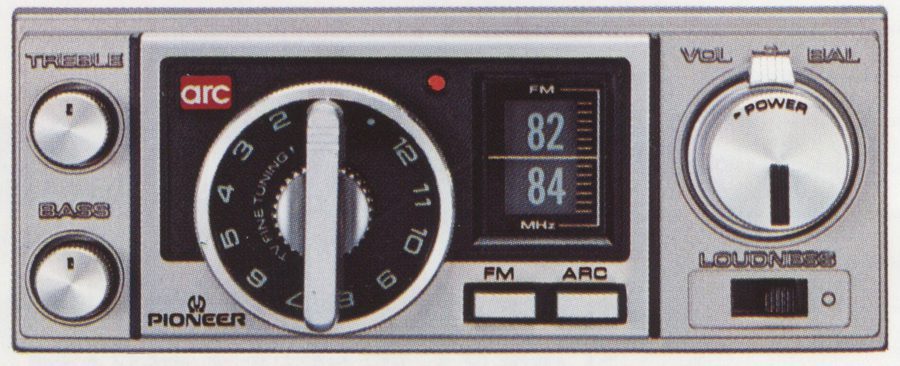
Now the weird looking knob in the middle is a throwback for some, but might be new to others. In the 1970s-80s TVs would have a similar knob to switch channels. Which is why this radio has a similar knob. This radio can tune into channels 1-12 VHF. At the time you could listen to the TV as you drove. This radio is also capable of Japan FM frequency 76-90MHz as well. Unfortunately with the push to digital OTA TV, this is just a nice throwback item.
Size: A
Reception Band: FM 76-90MHz, TV 1-12ch (VHF)
Maximum Output Level: 200mV
Useable Sensitivity: FM 1.09μV, AM 40μV
Signal to Noise Ratio: 60dB
Frequency Response (+/-3dB): 30Hz-15,000Hz
Bass/treble independent tone control: Bass +/-10dB (100Hz), Treble +/- 10dB (10kHz)
Release Date: July 1976
Retail price: ¥39,800
Amplifiers
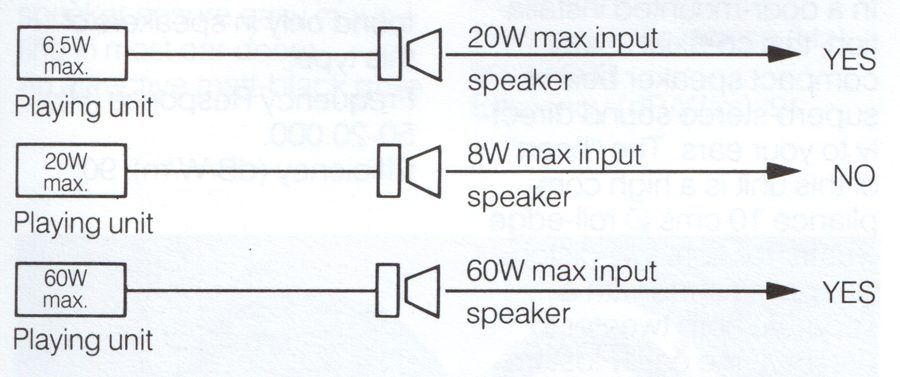
One of the other key components is the amplifier. It is the heart of the component car system. This is what powers the tape and radios, and is the output for the speakers. It is key that you pair the amplifier to your speakers to get the most out of your system. If you plan to run front and rear speakers, you will want to get two amplifiers as each one is only designed to run a pair a speakers. Later on we will get into how to hook up another amplifier to the setup. The most common amplifier you will see in Lonesome Car-boy setups is the GM-4.
GM-D8
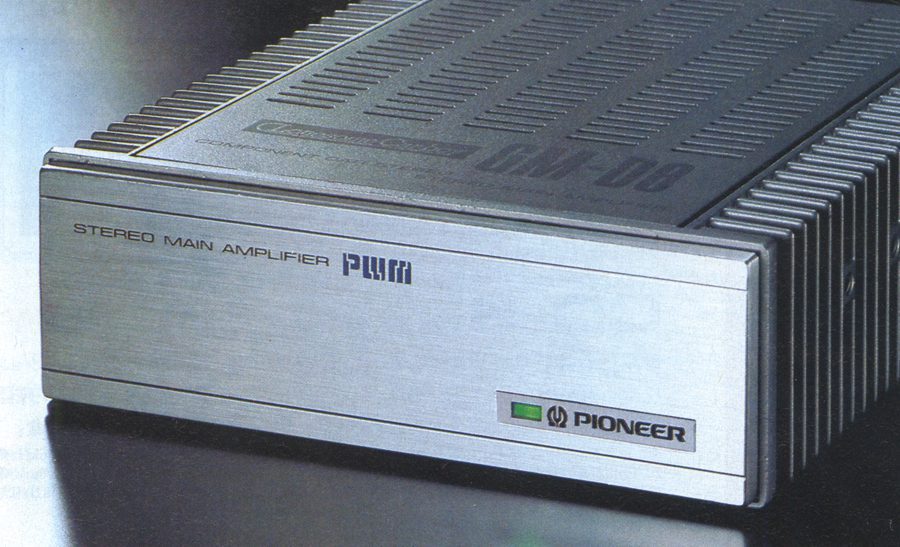
This is the best option to power the higher end rear deck-lid speakers. While bulky, it is the same size as the front of the tape decks, so it will look normal in the stack of other component gear. It also fits in the mount, and with mounting screws on the side.
Frequency Response (+/- 3dB): 20Hz-25,000Hz
Output Power Max: 40W x 2
Output Power Continuous: 30W x 2
Distortion: 0.03% (5W 1kHz)
Load Impedance: 4Ω (2Ω or 8Ω can be used)
Signal to Noise Ratio: 90dB
Size: 150 mm wide x 50 mm tall x 180 mm deep
Release Date: May 1981
Retail price: ¥39,800
GM-4


This is the most common and easily to source amplifier out of the available options. It also fits in the mounts in the mounting kits with the separate face plate adapter. It is the same size as the B and C type tape decks, so it would fit snug in a rack of them. Would be fine for powering front or rear speakers.
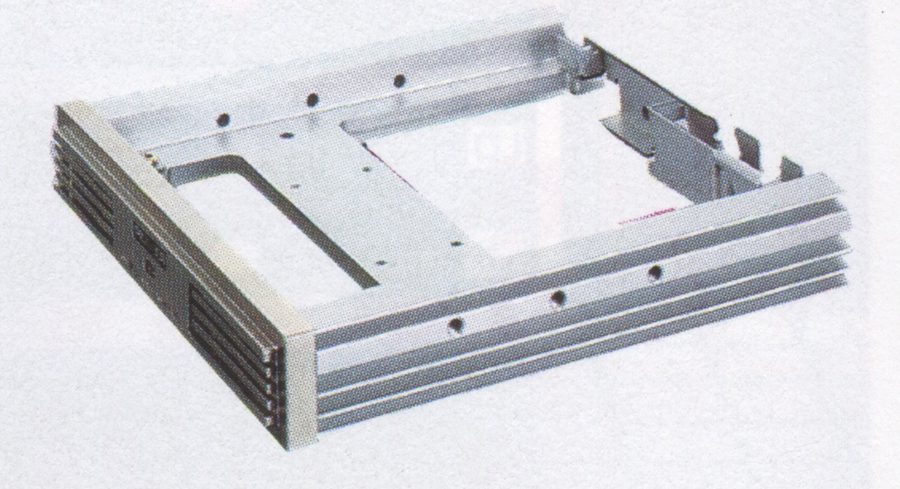
Frequency Response (+/- 3dB): 30Hz-30,000Hz
Output Power Max: 20W x 2
Output Power Continuous: 16W x 2
Distortion: 0.06% (15W, 1kHz)
Load Impedance: 4Ω (2Ω or 8Ω can be used)
Signal to Noise Ratio: 85dB
Size: 150 mm wide x 25 mm tall x 153 mm deep
Release Date: December 1980
Retail price: ¥18,800
GM-2

Very little watts for the same width and height of a GM-4. Would be fine to power some tweeters.
Frequency Response (+/- 3dB): 40Hz-30,000Hz
Output Power Max: 6.5W x 2
Output Power Continuous: 4.5 W x 2
Distortion: 0.08% (1.5W 1kHz)
Load Impedance: 4Ω (2Ω or 8Ω can be used)
Signal to Noise Ratio: 80dB
Size: 150 mm wide x 25 mm tall x 93 mm deep
Release Date: Between 1980-1982
Retail price: ¥10,800
GM-40
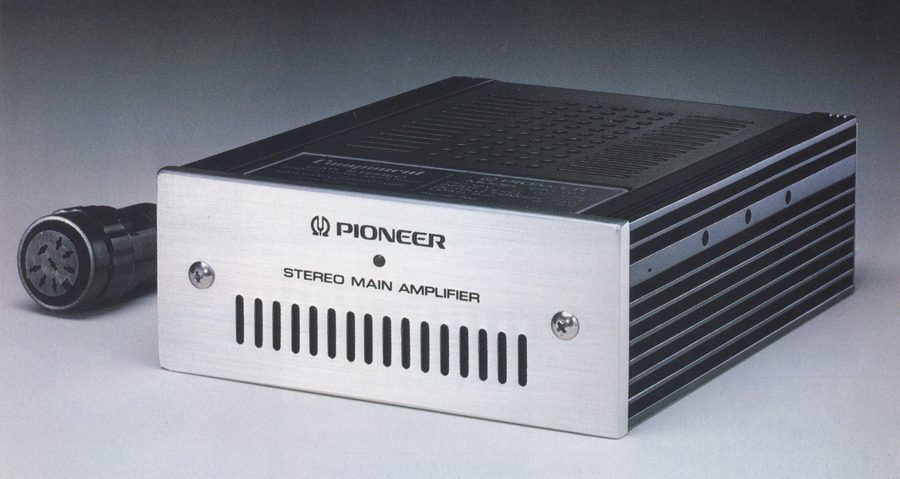
The GM-40 and GM-12 were at a time where Pioneer was upgrading the look of the amplifiers to be more sleek. These amplifiers came in the size A width, to make it easy to stack them with other size A models.
Frequency Response (+/- 3dB): 15Hz-40,000Hz
Output Power Max: 20W x 2
Output Power Continuous: 16W x 2
Distortion: 0.06% (1.5W 1kHz)
Load Impedance: 4Ω (2Ω or 8Ω can be used)
Signal to Noise Ratio: 80dB
Size: 122 mm wide x 50 mm tall x 150 mm deep
Release Date: November 1977
Retail price: ¥17,800
GM-30

The GM-30 is one of the original component based amplifiers offered from Pioneer. This is prior to Lonesome Car-boy but will still plug in together.
Frequency Response (+/- 3dB): 10Hz-40,000Hz
Output Power Max: 15W x 2
Load Impedance: 4Ω (2Ω or 8Ω can be used)
Signal to Noise Ratio: 78dB
Size: 110 mm wide x 50 mm tall x 174 mm deep
Release Date: November 1975
Retail price: ¥17,800
GM-12

The GM12 is a compact size A amplifier perfect for powering small drivers like tweeters.
Frequency Response (+/- 3dB): 40Hz-100,000Hz
Output Power Max: 6W x 2
Output Power Continuous: 5W x 2
Distortion: 0.08% (1.5W 1kHz)
Load Impedance: 4Ω (2Ω or 8Ω can be used)
Signal to Noise Ratio: 80dB
Size: 122 mm wide x 50 mm tall x 88 mm deep
Release Date: November 1977
Retail price: ¥8,900
GM-10

This is one of the original component amps, but with a small amount of power for a smaller pair of speakers.
Frequency Response (+/- 3dB): 20Hz-40,000Hz
Output Power Max: 5W x 2
Size: 70 mm wide x 50 mm tall x 124 mm deep
Release Date: November 1975
Retail price: ¥17,800
GM-120
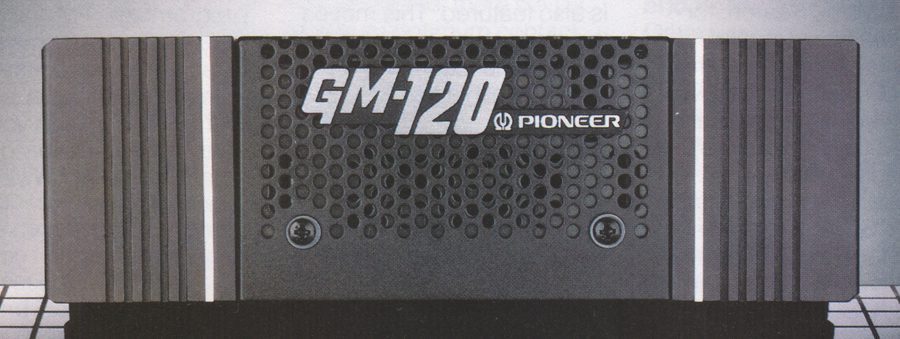
The most powerful of the Lonesome Car-boy series. Unfortunately, it is too big to mount in any of the mounting kits. This would be better hidden out of sight, like under the driver or passenger seat or in the trunk. The other issue is this doesn’t have a cable off of it, so you should also get the extension cable. Either the CD-115 (1.5m) or CD-130(3m) extension cable would work.
Frequency Response (+/- 3dB): 30Hz-30,000Hz
Output Power Max: 60W x 2
Output Power Continuous: 38W x 2
Distortion: 0.04% (25W, 1kHz)
Load Impedance: 4Ω (2Ω or 8Ω can be used)
Signal to Noise Ratio: 75dB
Size: 180 mm wide x 60 mm tall x 211 mm deep
Rear Mount Speakers
TS-X60
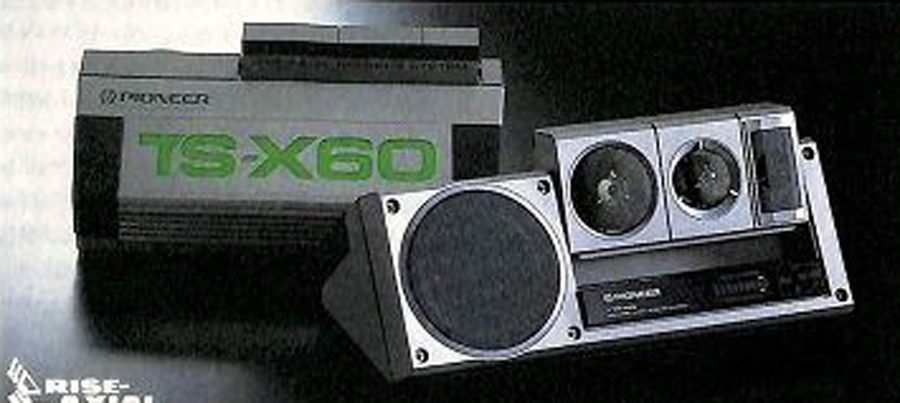
The TS-X60 is one of the highest level speakers you could get in the mid 1980s. It had 4 speakers on each side, with a power adjustable height for 3 of them, to get around those pesky headrests. On top of that, it gave off a warm green glow from the back when wired to your running lights. With having all of these cool features, it makes them still desirable to this day, with bad condition units running around $300 to restored units selling around $1,000.
Impedance (Ohms): 4Ω
Release Date: April 1984
TS-X15II
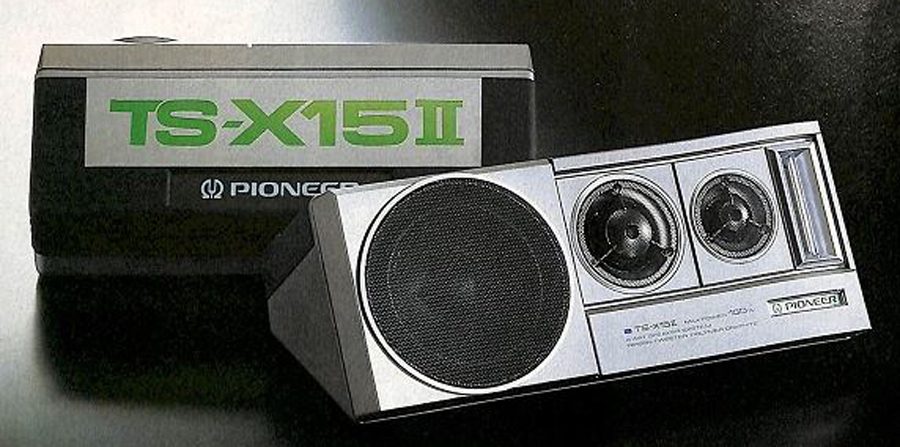
The TS-X15II is just a small update to the original X15s, with the added green warm glow off the back of the speaker.
Impedance (Ohms): 4Ω
Release Date: October 1984
TS-X15
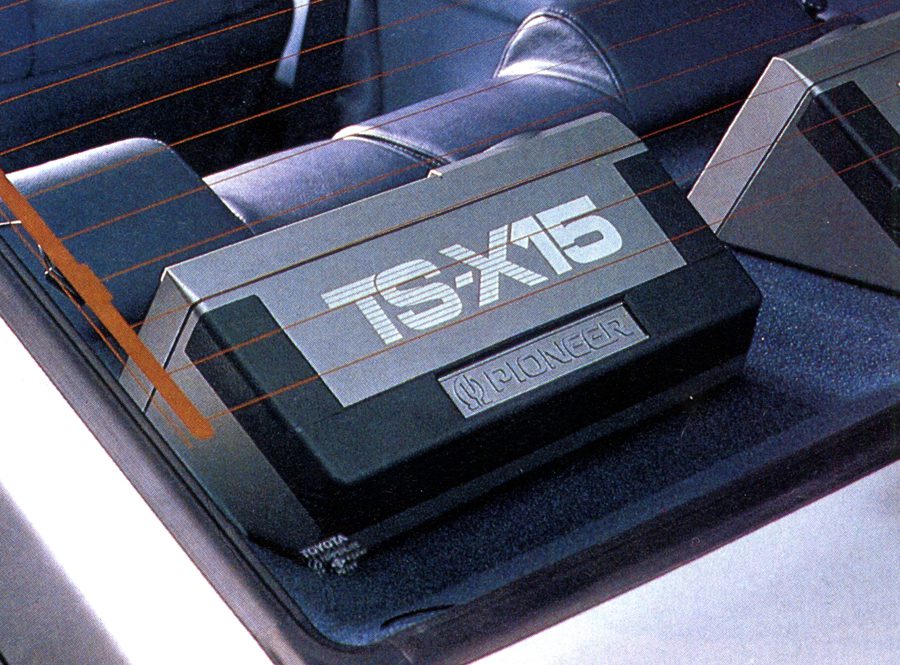

The TS-X15 was Pioneers top of the line surface mounted speaker of 1983. The 4-way speaker was able to handle 100W max while delivering a wide range of frequencies, from 45Hz to 40,000Hz.
Frequency Response: 45Hz-40,000Hz.
Efficiency (dB/W/m): 89
Impedance (Ohms): 4Ω
Power handling (Max): 100W
Dimensions: 355 mm long x 202 mm wide x 147 mm tall
Release Date: December 1982
Retail price: ¥64,800
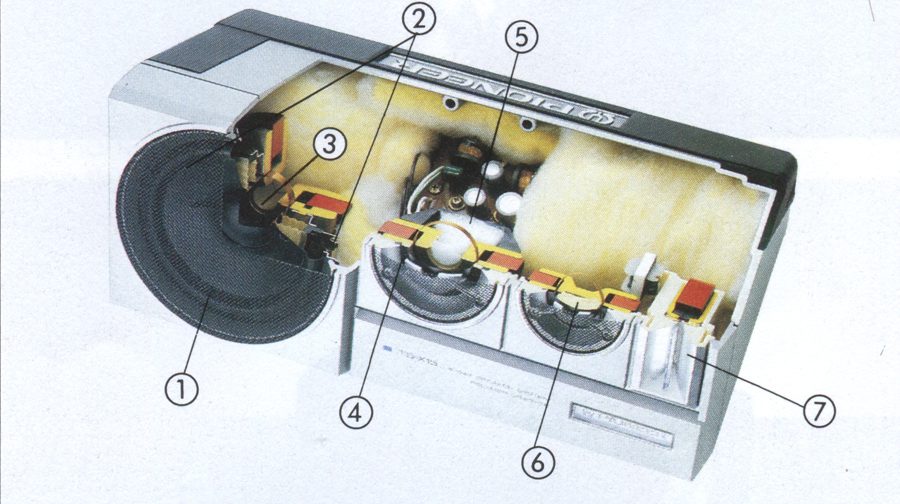
Midrange: 4) 3.5 cms Polymer Graphite dome with tangential speaker edge for good linearity and flat response. 5) Back cavity design creates smooth crossover from woofer, giving crisp, natural sound quality.
Tweeter: 6 2.5 cms Polymer Graphite dome with tangential speaker edge gives excellent high frequency response with good linearity.
Ribbon Super Tweeter: 7) By transforming the electronic signal directly into an acoustical signal without using a voice coil, the ribbon super tweeter combines high transient response and power handling with outstanding tonal clarity at frequencies far above the limits of human hearing – up to 40,000Hz.

TS-X11
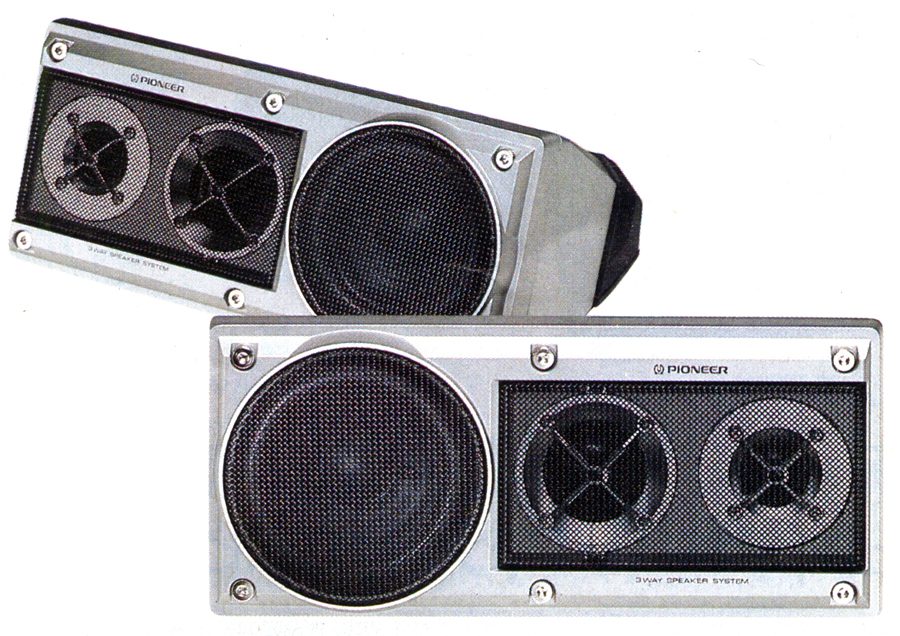
The TS-X11 featured an all aluminum die-cast cabinet for a clearer sound. It is a 3-way speaker designed for low distortion and high efficiency and high input resistance.
Frequency Response: 47Hz-25,000Hz
Efficiency (dB/W/m): 88
Impedance (Ohms): 4Ω
Power handling (Max): 60W
Dimensions: 300 mm long x 135 mm wide x 191 mm tall
Release Date: October 1980
Retail price: ¥54,800

TS-X10
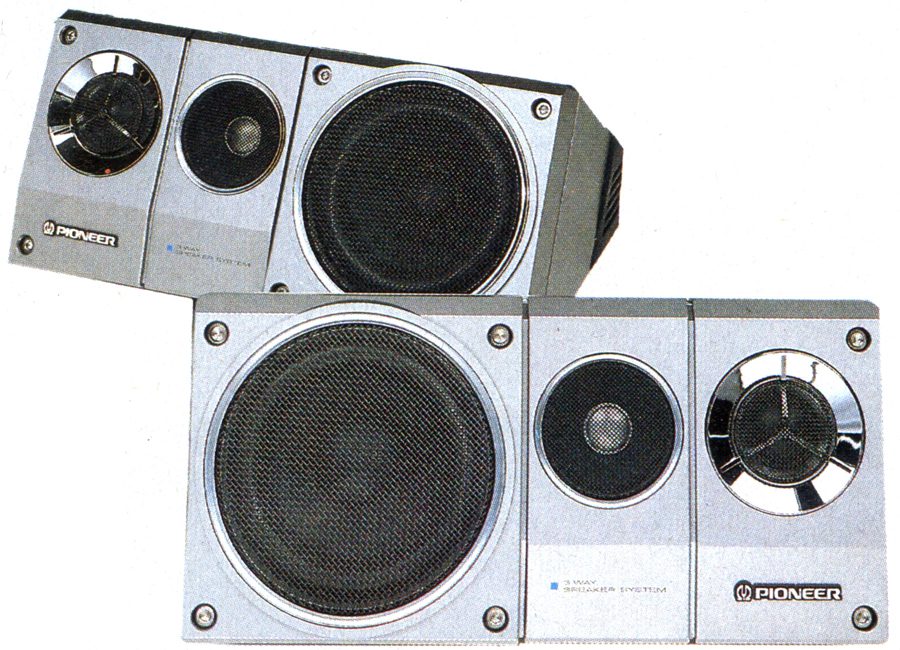

The TS-X10 is a complete 3-way speaker system in a vibration-proof, die-cast aluminium cabinet that’s sturdy enough to take the highest power inputs: up to 100W max.
Frequency Response: 48Hz-23,000Hz
Efficiency (dB/W/m): 88
Impedance (Ohms): 4Ω
Power handling (Max): 100W
Dimensions: 287 mm long x 138 mm wide x 186 mm tall
Release Date: July 1982
Retail price: ¥39,800
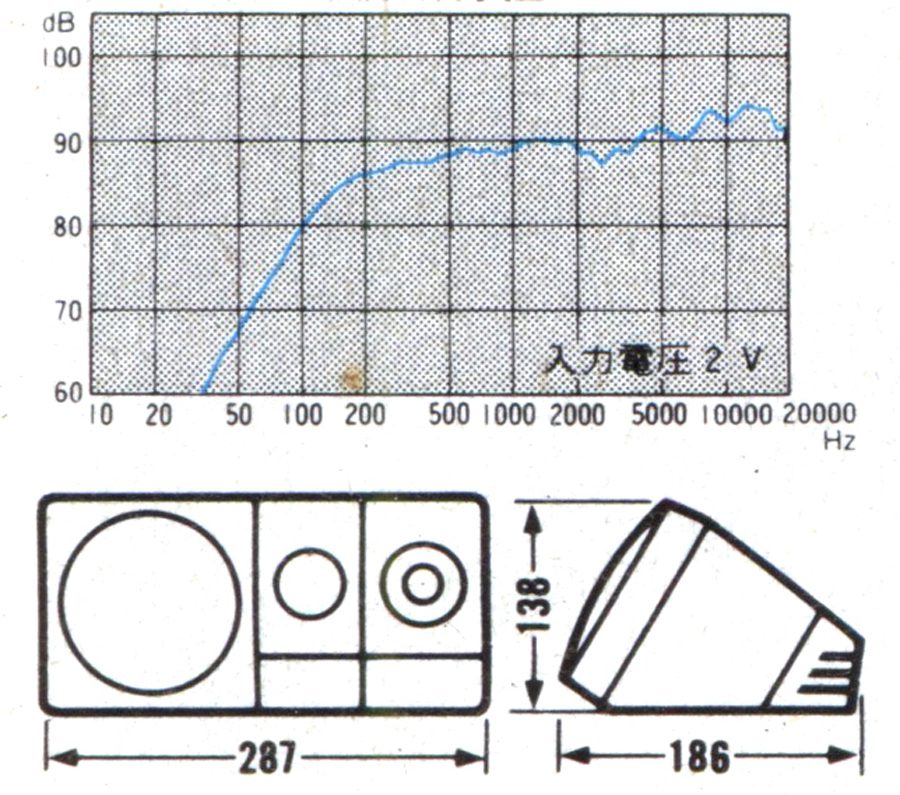
TS-X9
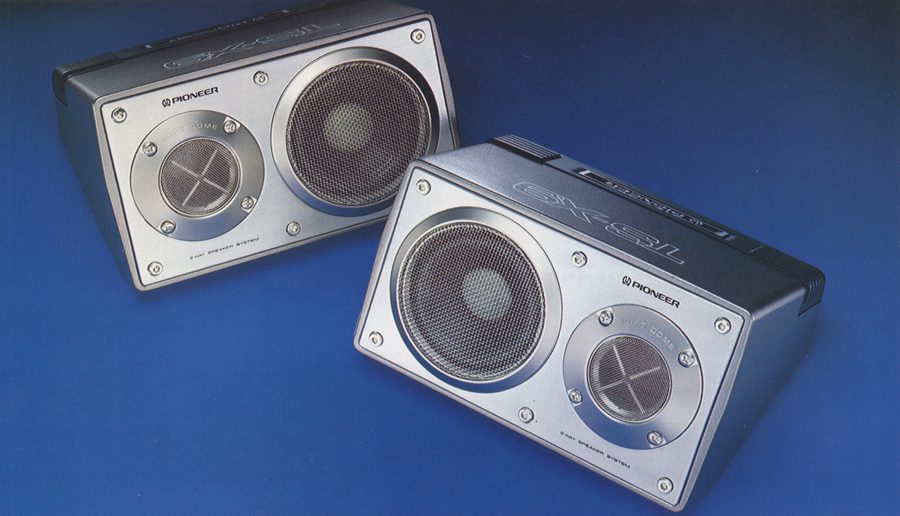

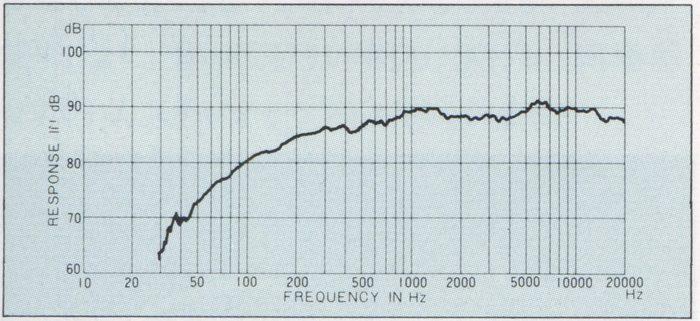
The TS-X9 was the sleek and modern deck lid speaker in the late 70s. Prior to the whole line switching in 1980s, but nicer looking than the TS-X6. It also featured an aluminum die-casted cabinet like the TS-X11 for better dynamics.
Frequency Response: 50Hz-22,000Hz
Efficiency (dB/W/m): 86
Impedance (Ohms): 4Ω
Power handling (Max): 40W
Dimensions: 226 mm long x 130 mm wide x 180 mm tall
Release Date: November 1977
Retail price: ¥39,800
TS-X8
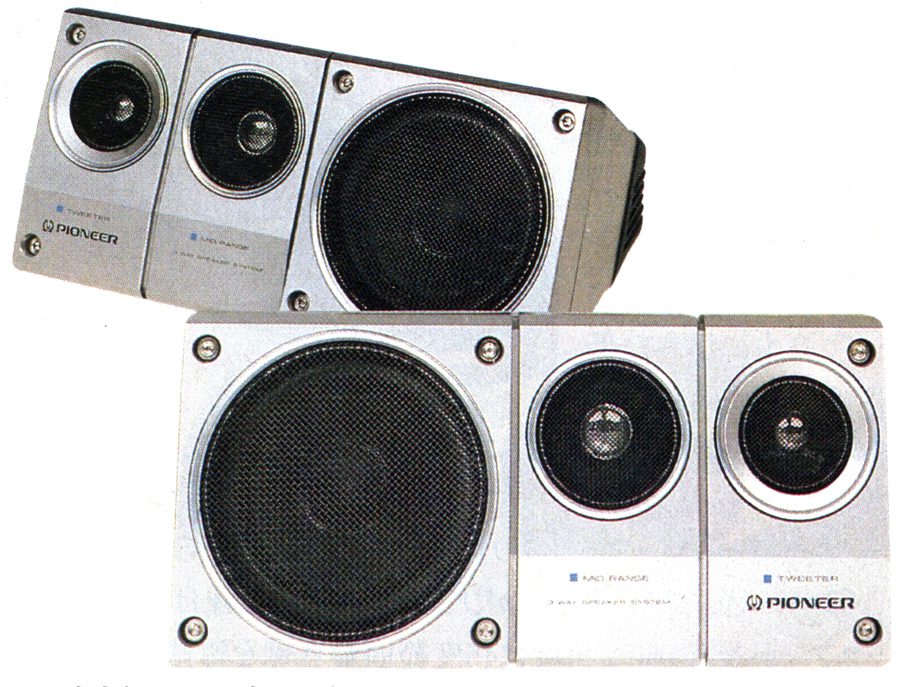

High power handling capability, the dynamic sound quality of a self-contained 3-way speaker system and a sensible price tag make the TS-X8 outstanding value for money.
Frequency Response: 50Hz-22,000Hz
Efficiency (dB/W/m): 88
Impedance (Ohms): 4Ω
Power handling (Max): 80W
Dimensions: 270 mm long x 124 mm wide x 169 mm tall
Release Date: July 1982
Retail price: ¥28,800
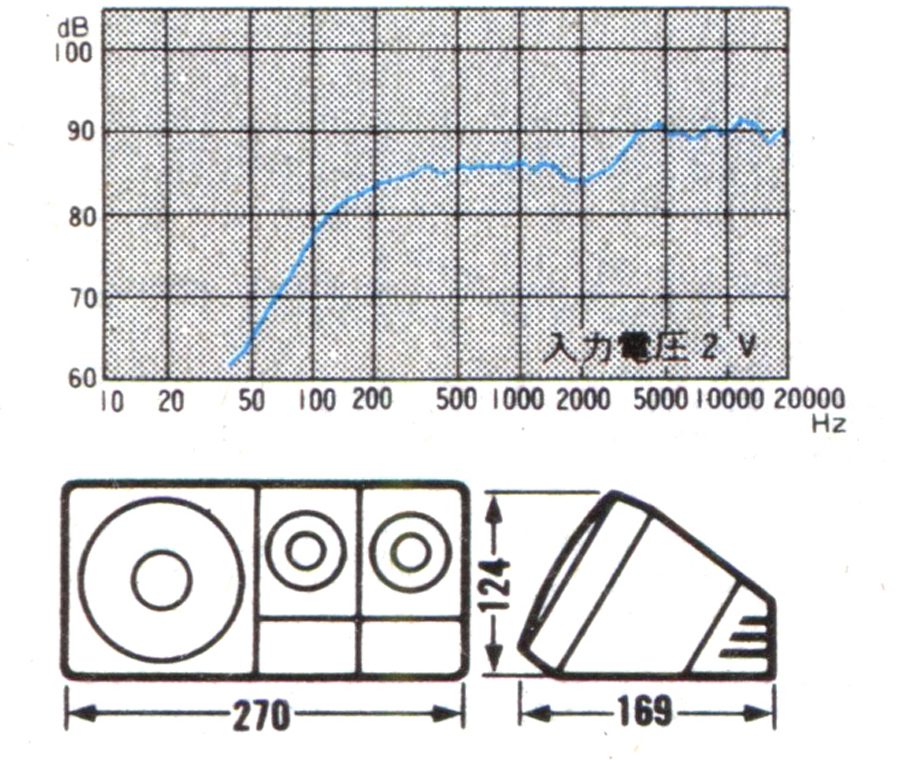
TS-X7


TS-X7 is a 2-way speaker featuring a reflex enclosure to enhance the low frequencies. While it looks like the third grill is for a tweeter, it is actually a port to deliver bass response down to 70Hz. This was the budget deck-lid speaker for 1983.
Frequency Response: 70Hz-20,000Hz
Efficiency (dB/W/m): 88
Impedance (Ohms): 4Ω
Power handling (Max): 60W
Dimensions: 260 mm long x 130 mm wide x 160 mm tall
Release Date: May 1983
Retail price: ¥16,800
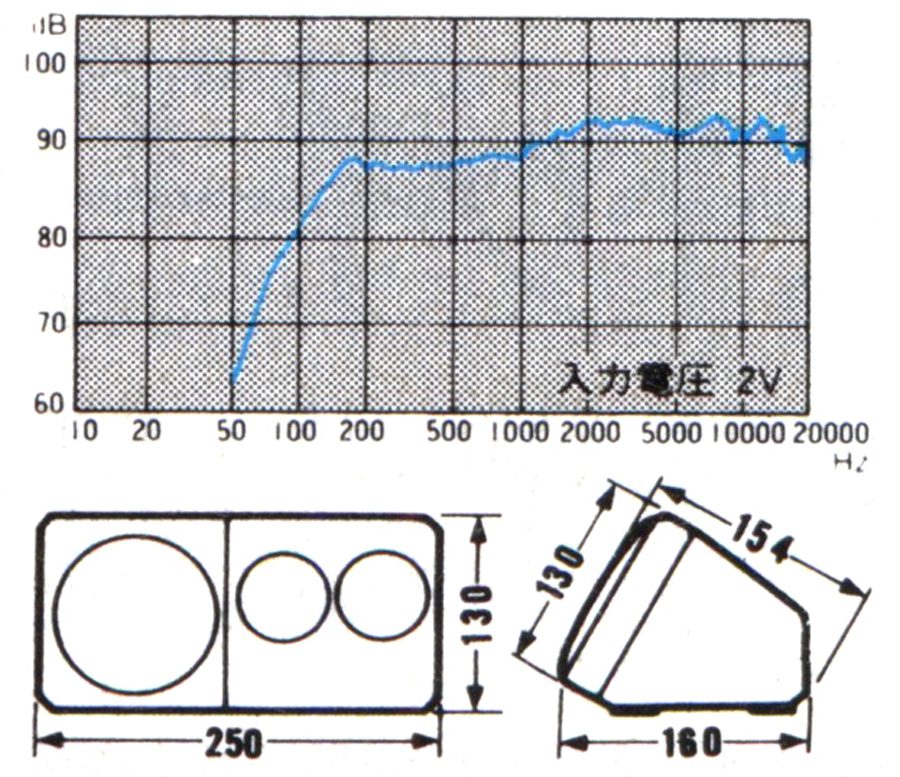
TS-X6
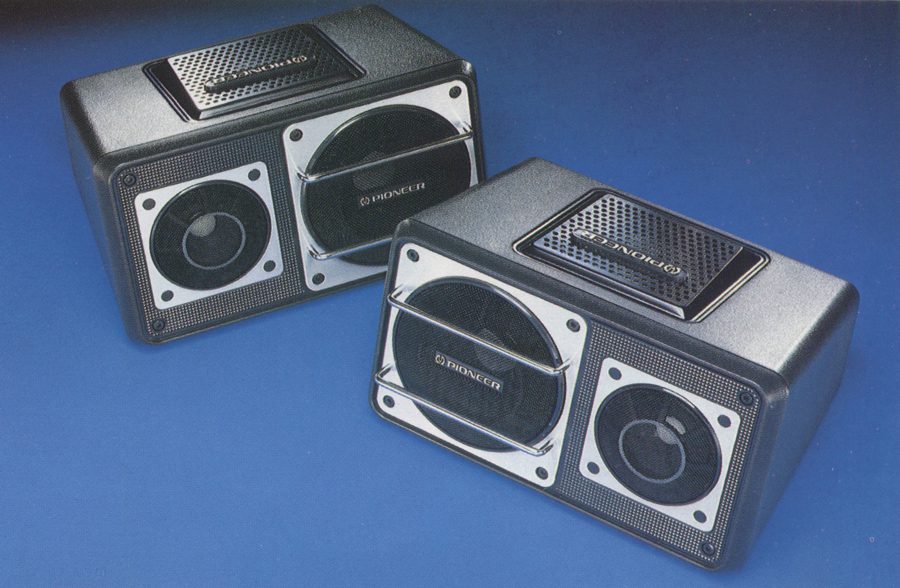
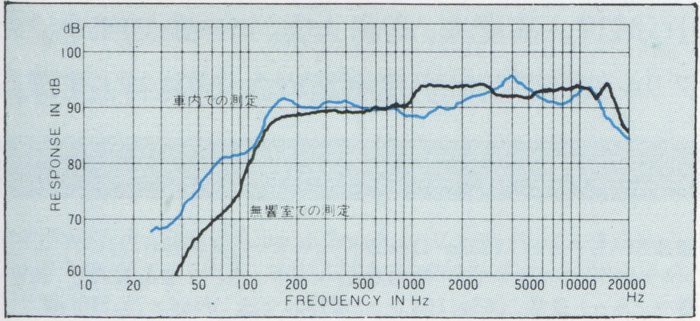
There are a few other deck lid speakers that were available in 1977, but this was the first that started to look like the rest of the ones on this page. The black plastic at the time seems cheaper looking than the silver that came out later. I don’t think these held up aesthetically like the rest of the TS-X line.
Frequency Response: 80Hz-20,000Hz
Efficiency (dB/W/m): 88
Impedance (Ohms): 4Ω
Power handling (Max): 20W
Dimensions: 236 mm long x 128 mm wide x 170 mm tall
Release Date: November 1977
Retail price: ¥23,800
TS-M6
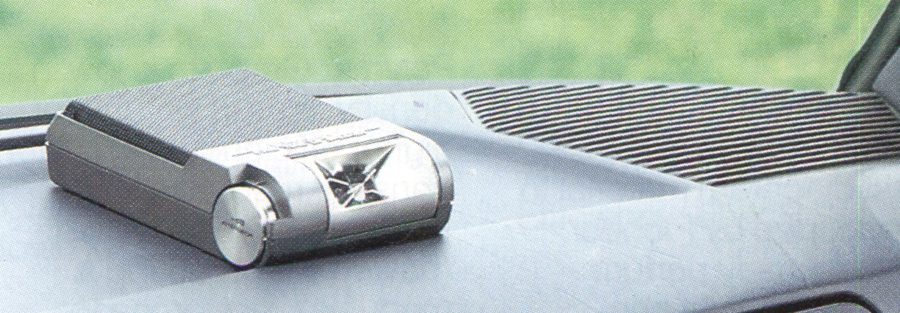

TS-M6 is a premium-quality, 2-way tune-up speaker with adjustable angle horn tweeter and built-in attenuator. Maximum 20W power handling capability (impedance 8 Ohms) and connected in parallel to main speakers, with no loss of output power from the amplifier. Designed for easy mounting on top of the dashboards, TS-M6 may also attached to door or side panels to good effect.
Frequency Response: 350Hz-22,000Hz
Efficiency (dB/W/m): 91.5.
Impedance (Ohms): 8Ω
Power handling (Max): 20W
Dimensions: 121.5 mm long x 78 mm wide x 33.5 mm tall
Release Date: May 1981
Retail price: ¥14,800


TS-M2
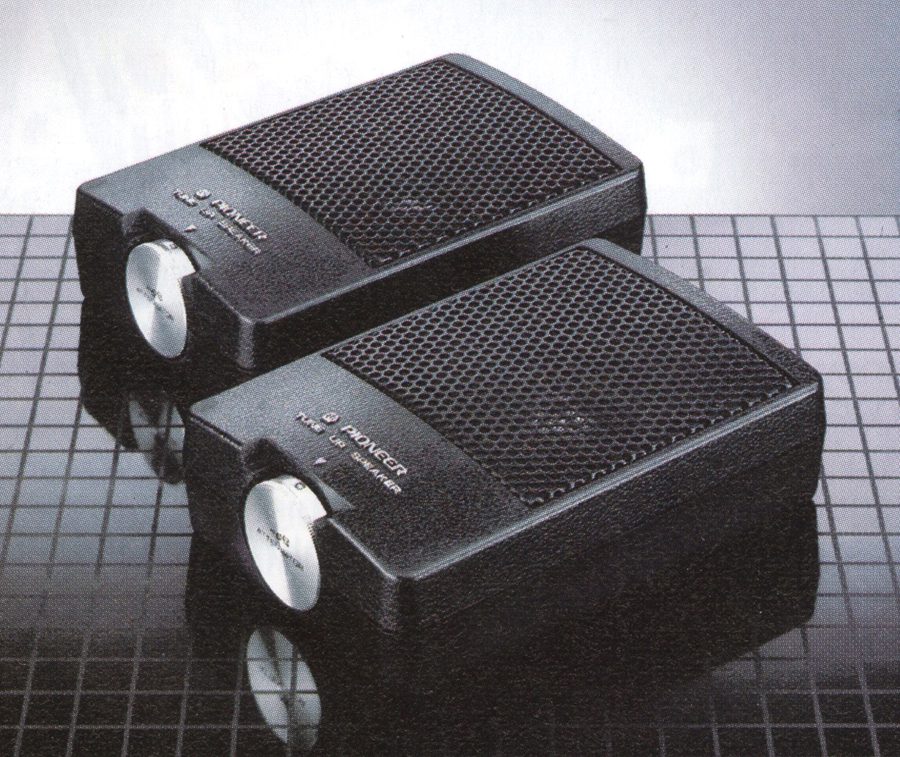
TS-M2 is a single cone, high compliance roll-edge speaker, using an exceptionally large (85 g) magnet for optimum mid/high tone sensitivity. Like the TS-M6, it also features a built-in attenuator for full control over mid-range/ treble output (TS-M2 and TS-M6 speakers are always connected in parallel to main speakers).
Frequency Response: 450Hz-20,000Hz
Efficiency (dB/W/m): 91.5
Impedance (Ohms): 8Ω
Power handling (Max): 20W
Dimensions: 115 mm long x 78 mm wide x 32.5 mm tall
Release Date: March 1977
Retail price: ¥8,000
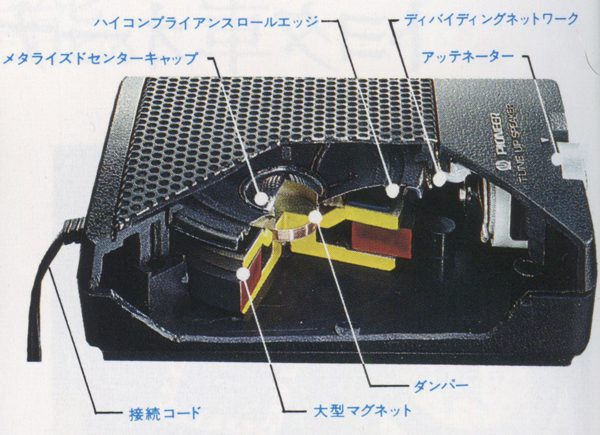

Equalizers
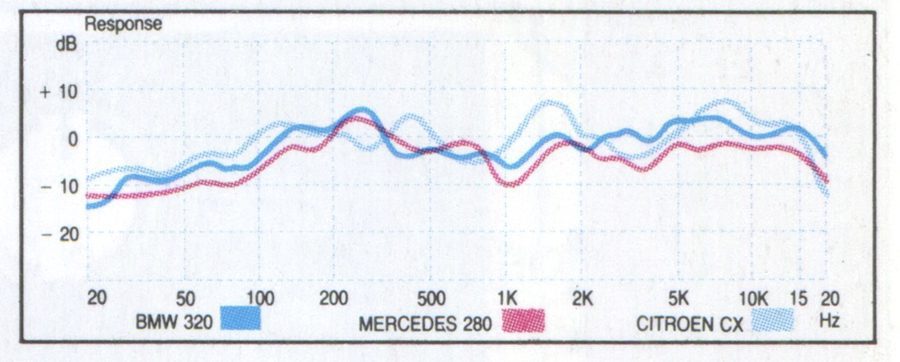
When building a Lonesome Car-boy component setup, you might want to have more than just a pair of front or rear speakers. The equalizer is the easiest way to add another pair of speakers to the mix with the help of adding another amp hookup. The other benefit is that you are able to adjust the frequencies for your car.
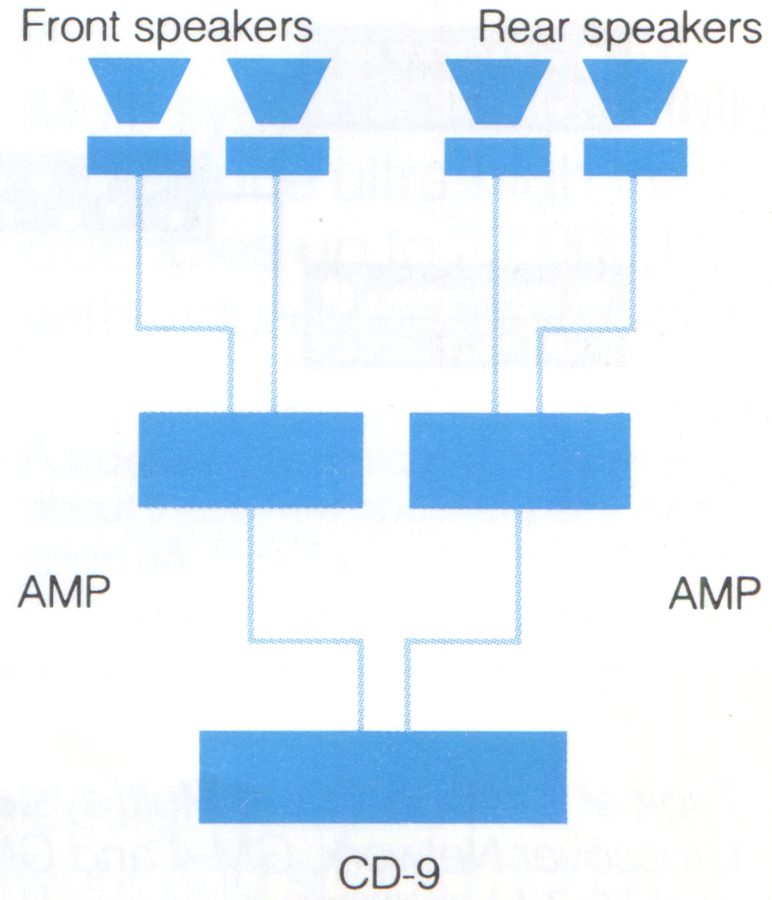
CD-9

The CD-9 is a nine band graphic equalizer designed to add the ability to adjust nine individual bands and to allow connecting two amps for front and rear speaker pairs. The nine bands range from 60 Hz-16 kHz and the front and rear is balanced with a sliding fader. It also has an illuminated front and rear balance indicator and slide controls.
Size: B
Release Date: May 1982
Retail price: ¥27,800
CD-5
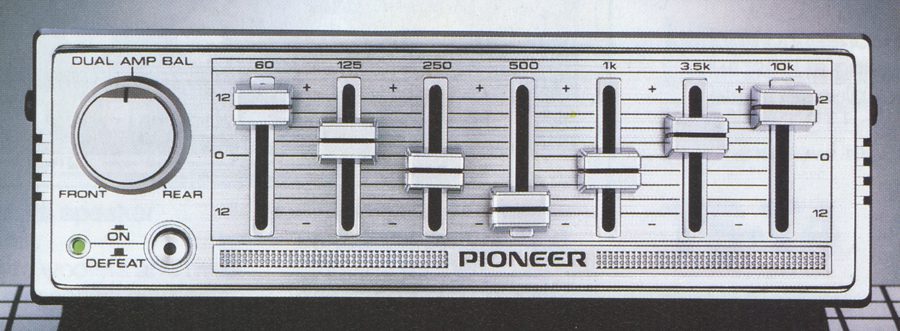
Similar to the CD-9, the CD-5 is a seven band graphic equalizer to adjust the frequencies band and allowing the ability to connect two amplifiers for front and rear balance. This model does not have the illumination like the CD-9 does.
Size: B
Release Date: June 1979
Retail price: ¥19,800
CD-646
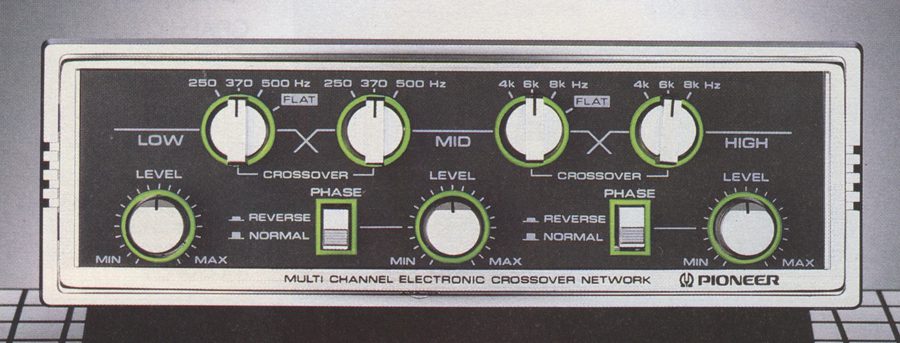
The CD646 is a multi-channel crossover, dividing the audio signal into 2 or 3 different frequency bands with individual outputs to an amplifier. This reduces distortion to a minimum and was pretty revolutionary at the time. This would be ideal if you planned to run separate front speakers, one being a mid range and one being a tweeter. With this you can run separate speakers to act as a woofer and a tweeter. They even designed two speakers to be used with this unit only, the TS-T4 and the TS-S7. I wasn’t able to find out if this was available in Japan, but it was available outside of Japan.
Key Features
- 2 or 3-stage frequency separation.
- Individual amplification of low/mid/high frequencies.
- Minimal distortion levels.
- Phase shift feature ensures ideal phasing between different amplifiers/speaker pairs.
Size: C
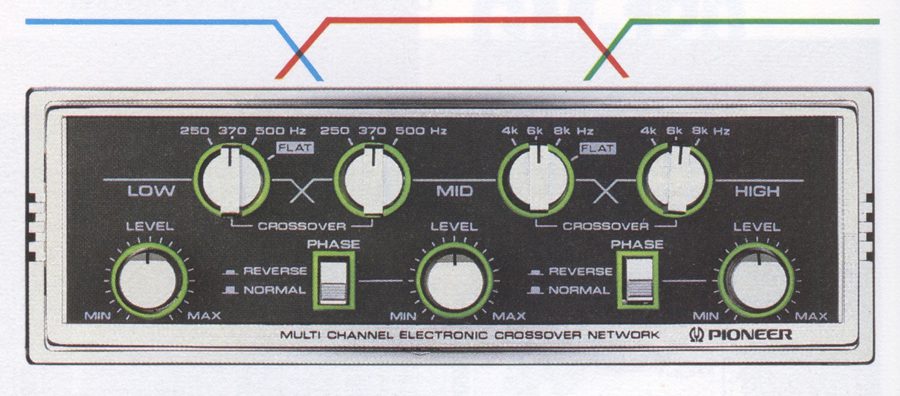


Level Indicator / Lights
RD-170

This 7 band spectrum analyzer / power level indicator is a fun way to watch your amplifiers output and to tune the stereo. Originally came with a high sensitivity microphone and a pink noise cassette tape to “tune” your stereo.
Size: 150 mm wide x 50 mm tall x 134 mm deep
Release Date: July 1983
RD-150


The RD-150 power level indicator provides a fun visual readout of the amplifier power output. Comes with an On and Off switch and a High and Low switch. This is probably one of the more expensive used items on this page.
RD-120

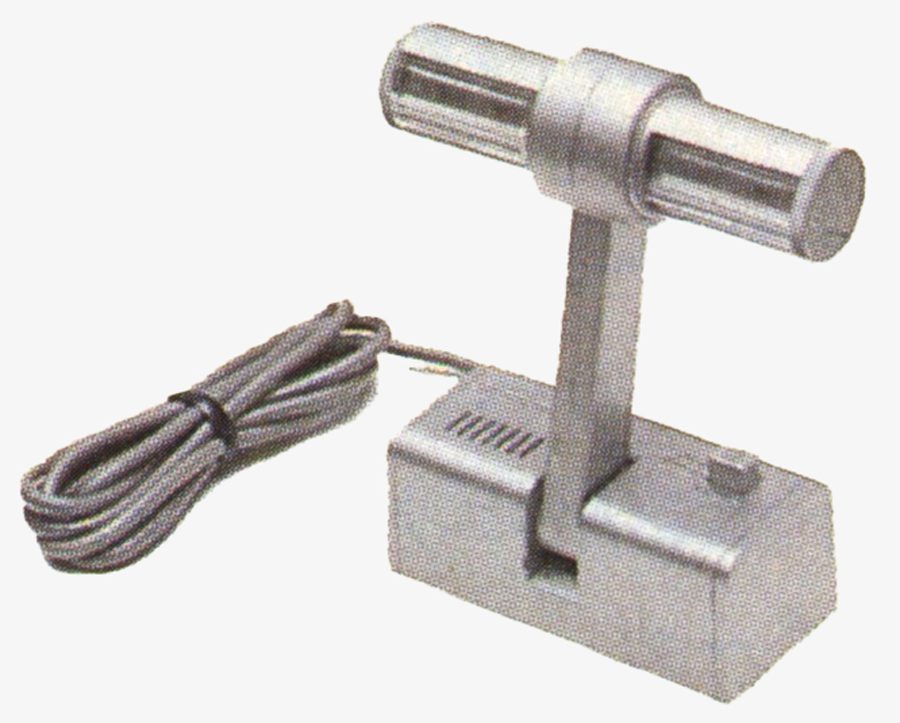
The RD-120 is a map light that was mounted on the dashboard. Not really stereo equipment, but it is a fun part from the era.
RD-110
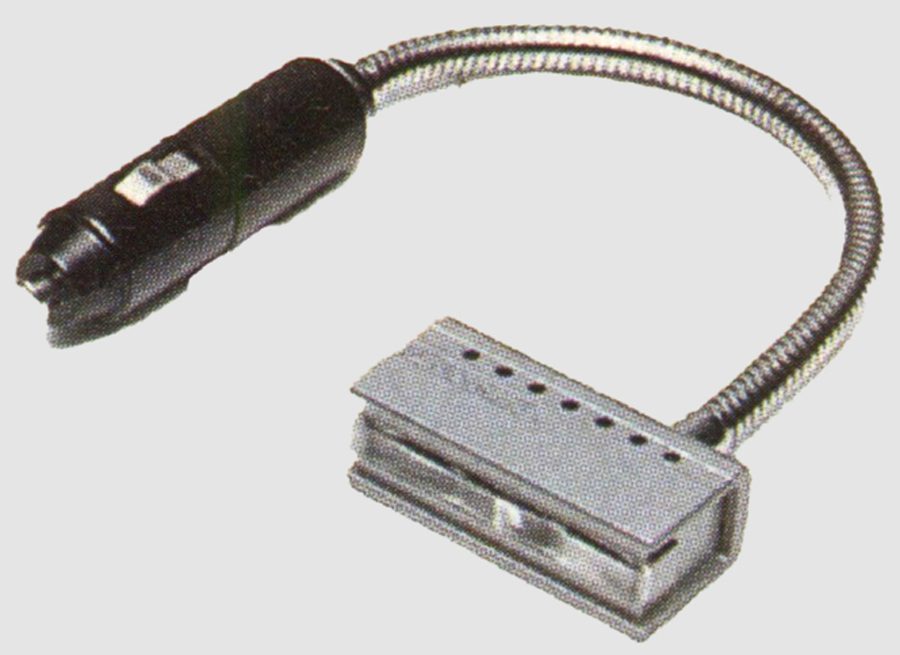
Not as permanent light like the RD-120, this map light just pugs into the cigarette port.
Mounting Kits
ADT-120
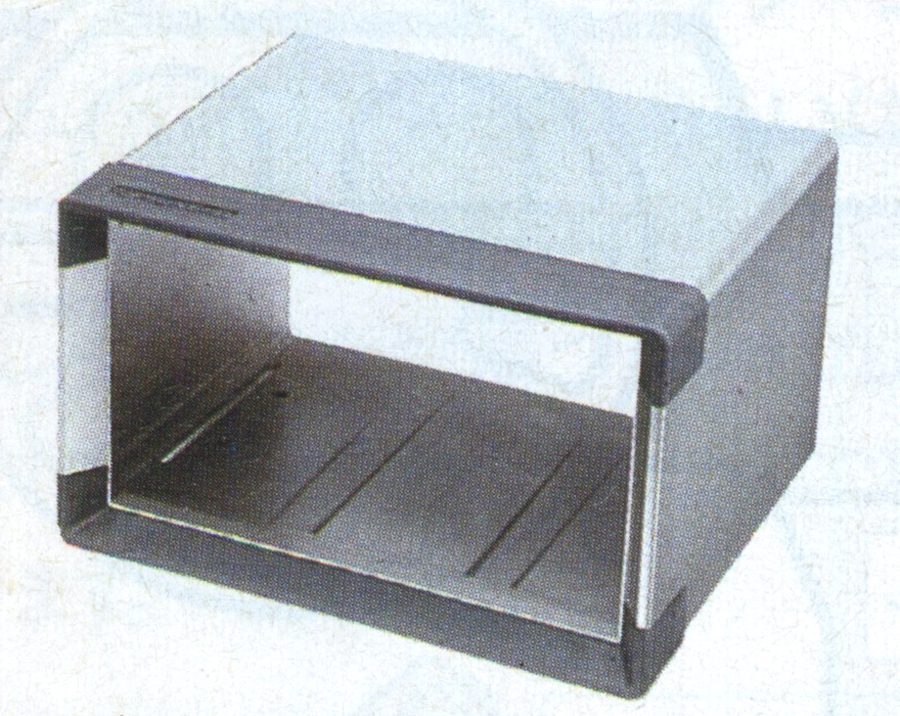
This is a case designed to fit two size D together. External dimensions: 204 mm wide x 126 mm tall x 162 mm deep.
AD-110
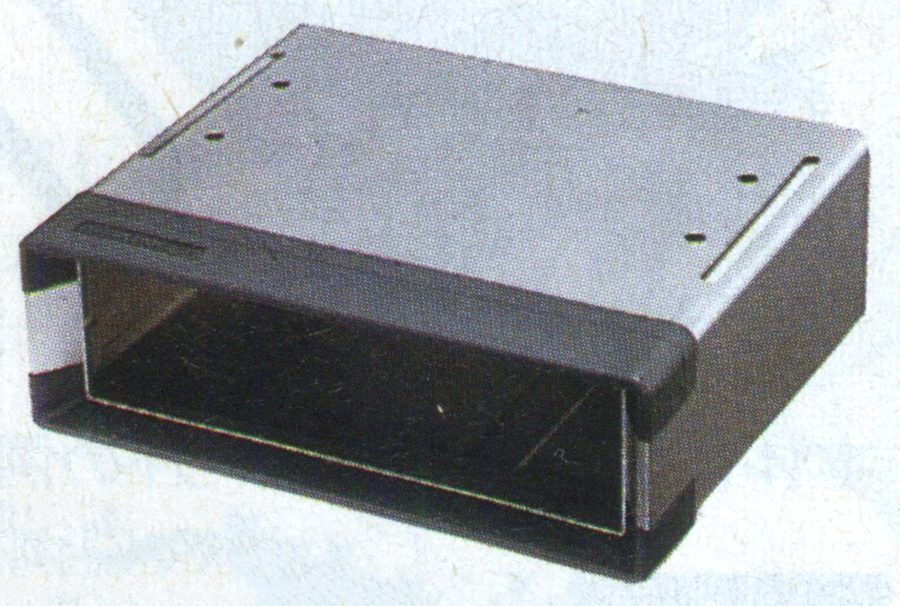
This is a case designed to fit one size D. External dimensions: 202 mm wide x 70 mm tall x 162 mm deep.
ADT-355
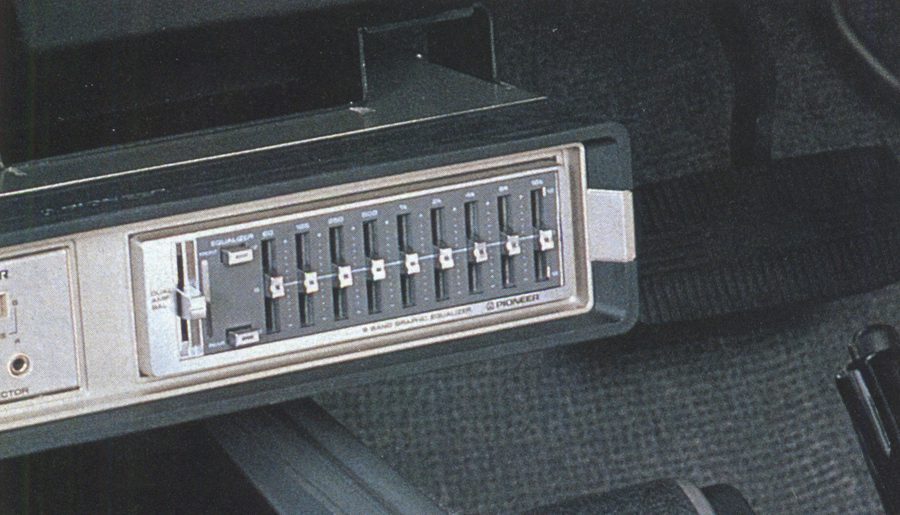

This is a case designed to fit two of the A, B, or C size. External dimensions: 340 mm wide x 72 mm tall x 164 mm deep.
ADT-353
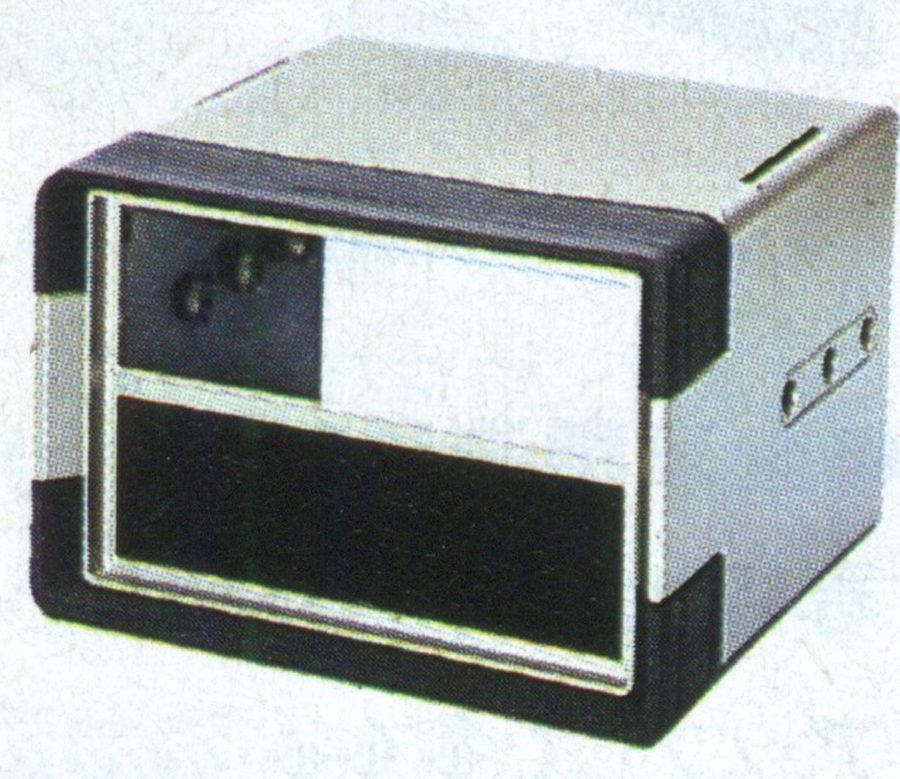
This is a case designed to fit two of the A, B, or C size vertically. External dimensions: 180 mm wide x 123 mm tall x 164 mm deep.
AD-350
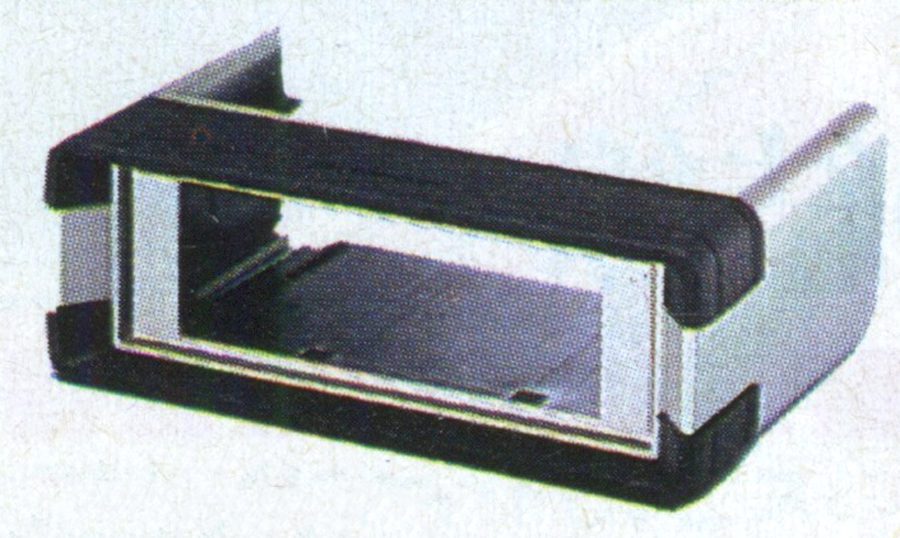
This is a case designed to fit one of the A, B, or C size. External dimensions: 182 mm wide x 70 mm tall x 126 mm deep.
AD-342
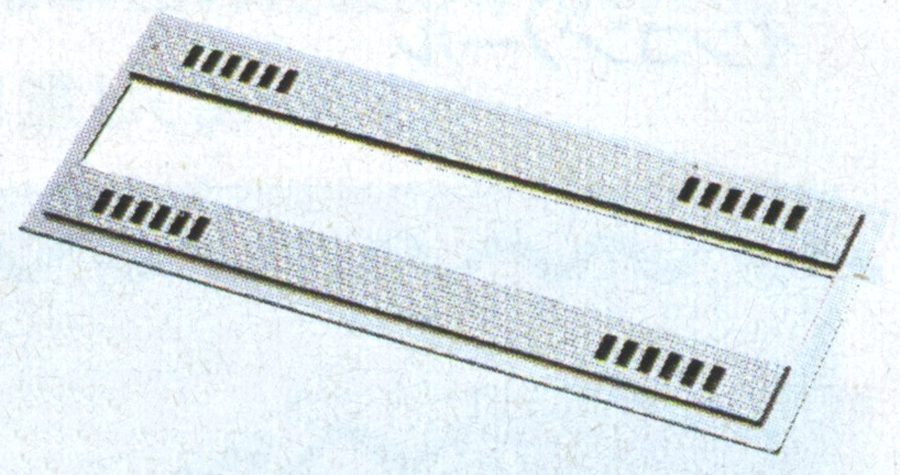
This is an adapter plate to fit the GM-4 or GM-2 amplifier into a size B slot.
Faders
CD-606

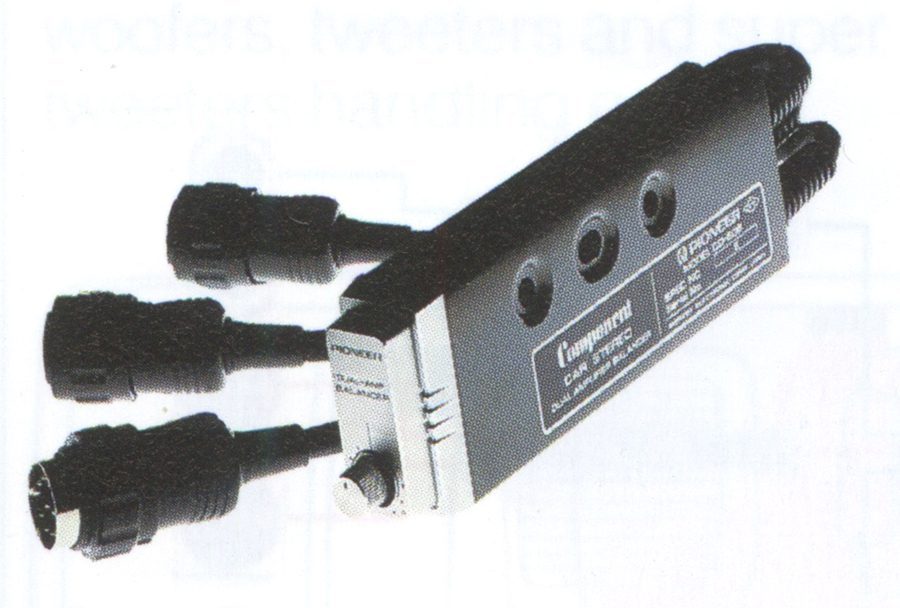
The CD-606 is like a slimmed down equalizer, removing the equalizer function. This adds the ability to add another amplifier to your system for front and rear amplifiers, but without the ability to fine tune the frequencies. The knob on the front is to control the front and rear bias.
UD-780A

The UD-780A is a high power fader control for systems of up to 2 x 70w power input, making it ideal for use with the GM-120 or GM-D8 amplifier. This does not add the ability to add another amplifier to the system, but adds the ability to connect 4 speakers to a 2 channel amplifier. This unit also features an attractive illuminated design for easier night operation. For less powerful systems (up to 2 x 25w power input) the AD-940 fader control is also available.
Source: Wikipedia Japan, Pioneer Car Audio English brochure 1982, Pioneer Car Audio Japanese brochure 1983, Pioneer Car Audio Japanese brochure 1979, Pioneer Car Audio Japanese brochure 1978, Pioneer Japan, Blog post about the ad

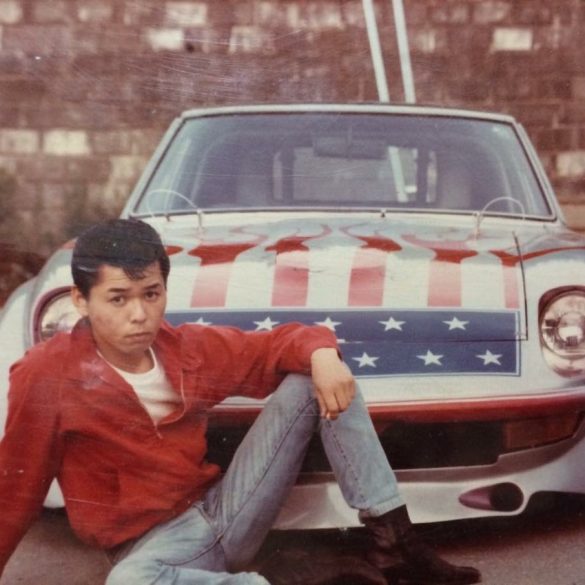
Spot on write up with tonnes of useful info! Look forward to seeing some more Kaido Racer suitable audio in the future!
Hi Sir,
Awesome Blog you have here, having a vehicle with full range of Lonesome Car-boy equipment i admire your dedication.
Reason for contacting you is , I saw somewhere on the large web an illuminated Pioneer/ lonesome car-boy sign that goes between the shelf speakers. For the life of me i have searched everything and i cant find any images of it anymore.
I have searched using every keyword possible, im hoping you might know the exact name or an image of it.
Thank You in Advance,
Robin
Thanks for reaching out. I dont know the exact model number or name of it, but there is one listed on yahoo auctions right now for 30,000 yen. Here is the link
Excellent write up. Answered loads of questions I had. Hopefully you can shed some light on the other systems you mentioned.
hola buenos dias, he disfrutado leyendo todo esto, muchas gracias